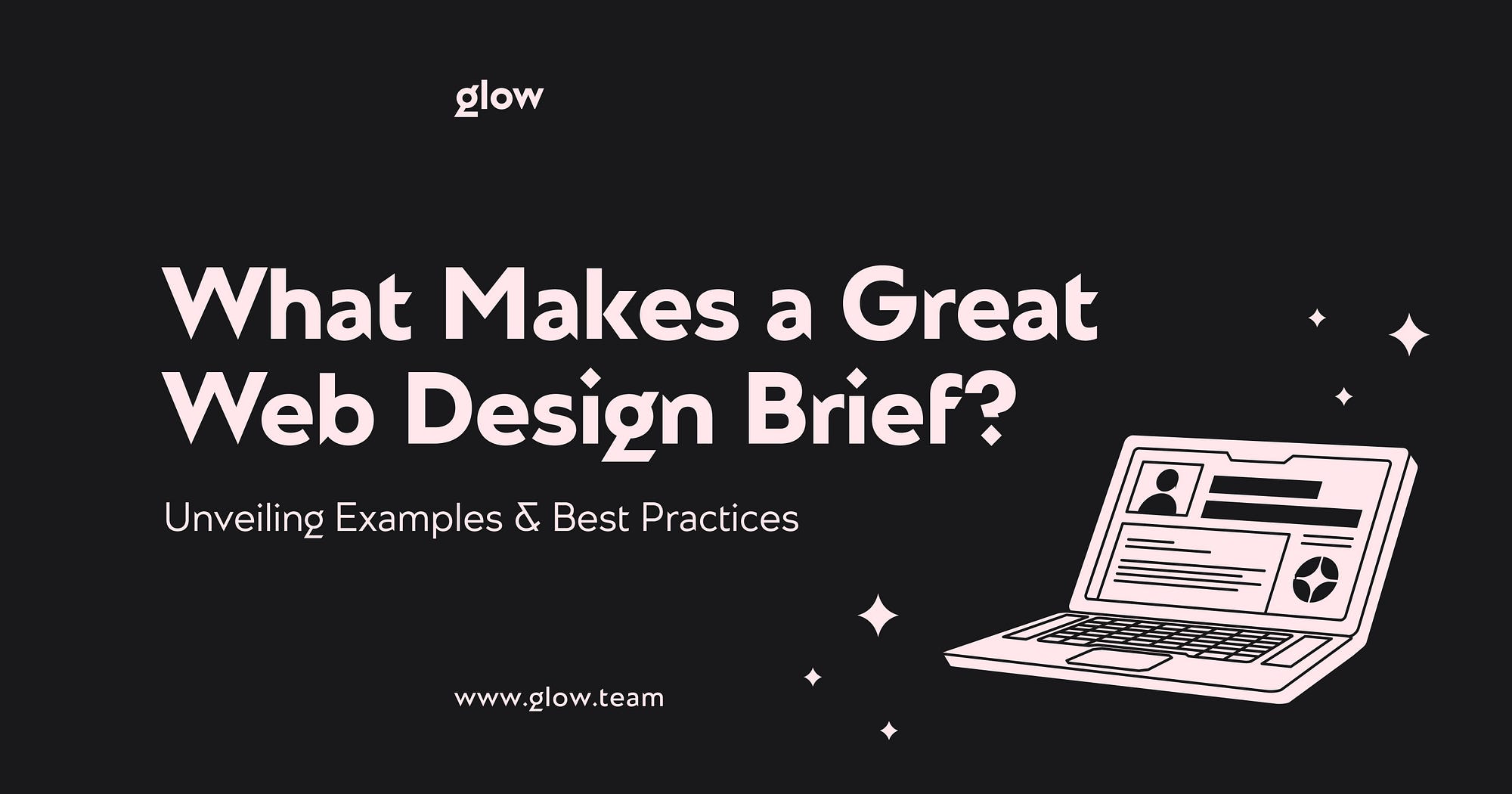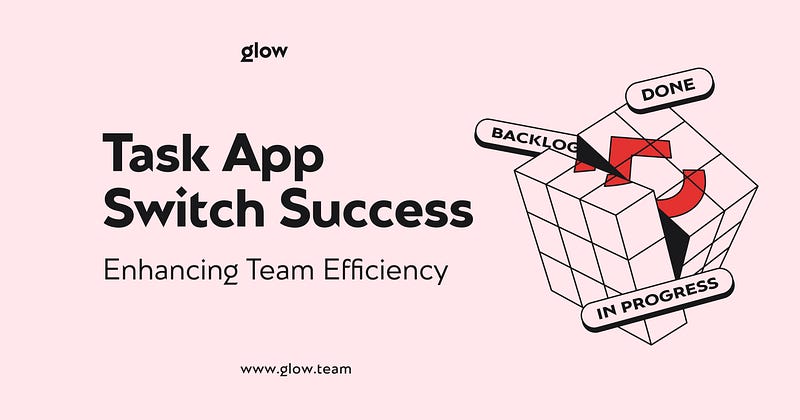Welcome to the digital world of site design, where creativity meets functionality! Creating a fantastic web design brief is analogous to building the groundwork for a magnificent skyscraper. And Glow Design Agency knows precisely how to reach the heights! We have a blueprint for designers to follow to create an immersive and cohesive online experience. In this study, we’ll reveal the secrets of a successful web design brief and present real-world examples and best practices.
A web design brief is more than just a list of requirements. It’s a road map for developing an engaging and visually attractive online masterpiece. We’ll break down the key factors that transform an average brief into a designer’s road map. Let’s look at the key elements that will make your brief a source of inspiration.
Are you a seasoned marketer, a budding entrepreneur, or just a curious soul who wants to understand the magic behind compelling websites? Then, this guide will be your ticket to the art and science of crafting a web design brief that stands out in the vast digital landscape.
What is a Web Design Brief?
A web design brief is a fundamental document that defines the scope and goals of a website project. It is like a comprehensive manual in which everything is described similarly. You can find the client’s expectations, project requirements, and even the desired results in detail. This document ensures a clear understanding between the client and the designer regarding the project’s direction. Typically, the brief includes essential elements such as:
- The purpose of the project
- Target audience
- Key features
- Aesthetic preferences
By providing this information, the client equips the designer with the necessary tools to create a website that matches their vision. It’s like a defined roadmap. It guides the design process and helps avoid misunderstandings. You can easily align the design with the client’s business goals with a web design brief.
A carefully crafted brief ensures that you understand the client’s needs. It leads to a more efficient and effective design process. This alignment not only saves time. It increases the quality of the final product, ensuring that it meets or exceeds the client’s expectations.
There are various web design assignment templates. These are the ones that offer a structured approach to gathering this vital information. They allow you to include all the necessary details. It will enable you to ensure that nothing important is missed. Using a template helps to simplify the process. You make the process more transparent for clients (articulating their needs) and for designers to translate them into a functional and aesthetically pleasing website.
To summarize, it is like terms of reference. That is, it is a critical element of the website development process. It reflects the client’s requirements and is a guiding document throughout the project. It promotes clear communication and practical cooperation between the client and the designer.
Key Elements of a Web Design Brief
The critical elements of a web design specification are like puzzle pieces. These small pieces then add up to a clear picture that helps designers. Writing a website design specification requires a detailed statement of the background and goals of the project. These elements, neatly arranged, ensure that the designers understand entirely. It helps pave the way to create a web design that will be fully aligned with the vision and goals.
In-Depth Knowledge of the Client’s Sector
A deep understanding of the client’s industry is vital. It includes understanding their market niche, core audience, and clear market position. With this knowledge, the website design is harmonized with the brand persona and focused on their target market. There are several important steps to consider before creating a brief:
- Market research. Study of the client’s field to identify norms and emerging trends.
- Audience demographics. Finding out the target users of the website to customize the design to their preferences and requirements.
- Brand essence. Analyzing the brand’s core characteristics, values, and aesthetic elements to ensure a consistent online presence.
This detailed study helps develop a site that is visually appealing and effectively engages with the audience. And in the business world, this point is no small matter.
Precise Objectives for the Website
Determining the exact goals of the website is extremely important. These goals can range from increasing sales to accumulating leads to improving user interaction. Each goal should be specific, measurable, achievable, relevant, and time-oriented. Here are the most critical components to explore:
- Engagement goals. Set quantifiable goals for online transactions, registrations, or other forms of user activity.
- Content plan. Organizing the variety of content to be presented on the site, such as articles, product explanations, or multimedia elements.
- Indicators of success. Identifying critical metrics to measure the website’s effectiveness once it is launched.
By defining these goals, the design team can create a website that is aesthetically, functionally distinctive, and aligned with the company’s goals.
How to Create a Web Design Brief Correctly?
Starting to develop a brief web design? A clear and compelling web design brief is the first step toward translating ideas into an exciting online presence. A well-written brief serves as a roadmap for designers. And it ensures that they understand your vision and goals. Here’s a straightforward guide on how to correctly write a web design brief:
- Project Overview. Define your website’s purpose and goals clearly. Give a brief summary of your company or project to provide context and direction to designers.
- Target Audience. Define your audience by identifying their demographics, preferences, and behaviors. Understanding your users will help designers create a site that resonates with your audience.
- Branding Information. Talk about critical aspects of your brand, such as personality and values. Include existing brand assets such as logos or style guides. It will ensure the design is consistent with the overall brand identity.
- Design Preferences. Indicate your preferred design style — modern, classic, or minimalist. Specify color schemes, image preferences, and any specific visual elements you plan to use on your site.
- Technical Requirements. List the key features and functionality required for your site. Indicate which platforms or technologies you prefer. Providing technical details helps designers align their approach with the needs of your project.
These essential points will turn your web design specification into a comprehensive document. It will help designers create a website that meets and exceeds your expectations.
Harmonizing Visual Appeal with Usability
In web design, achieving harmony between aesthetic attractiveness and user-friendliness is crucial. A visually eye-catching site should be easy to navigate, with easy-to-navigate paths that are intuitive and quick to load. Prioritizing accessibility is paramount, ensuring people with different abilities can enjoy the site. SEO techniques also affect a site’s online presence and search engine ranking.
It is essential to keep up to date with current trends and innovations in web design, but you must also evaluate their relevance to the project’s goals. The final design should reflect the ethos and principles of the brand, have a memorable impact on users, and effectively fulfill its functional purpose.
Common Mistakes When Writing a Brief
While developing the brief, some repeated mistakes can significantly derail the project’s trajectory. A carefully prepared brief is important because it is a communication tool. And it is the one that harmonizes the vision of all parties involved in the project. However, some mistakes can lead to misunderstandings, delays, and results that don’t match the original objectives. Identifying these errors is critical to adequate brief preparation:
- Neglecting comprehensive research. Skipping in-depth research can result in a superficial brief. It may miss critical aspects of the project.
- Ambiguous objectives. Lack of clarity in objectives can confuse the team. It will lead to inaccurate results.
- Losing sight of the target audience. Failure to clearly define the audience can lead to the design failing to connect with the desired users.
- Unrealistic deadlines. Setting unrealistic deadlines can make the work rushed. It will affect the quality of the result.
- Ignoring budget constraints. Misidentification of budget constraints can lead to overspending and scope creep in the project.
A well-crafted brief serves as a guiding document throughout the project. It should be sure to provide clear, concise, and comprehensive information. Emphasize specific, achievable goals and think through all aspects of the project, including:
- audience
- timeline
- budget
The brief lays the foundation for effective and efficient project execution. Avoid these common mistakes to ensure the project is executed smoothly and meets the client’s vision.
Examples of Using a Brief in Web Design
In web design, the importance of a well-written brief cannot be overemphasized. It acts as a navigational aid, guiding designers and clients through the complexities of the project. The essence of the brief is to clarify the purpose of the site, its aesthetic orientation, and target audience.
It is much easier to understand the essence of the brief with real-world examples. That’s why we suggest you consider a real example on which you can understand the nature and value of the brief:
- Sweet Delights, a small bakery, is looking for a web presence to expand its customer base and facilitate online orders. The brief describes a warm, inviting brand emphasizing handmade and artisanal products. The target audience is locals, targeting those who appreciate quality baked goods and personalized service.
Now, let’s do a comparative analysis on the key components we described above:
Project Overview
The brief clearly states the bakery’s goal of expanding its reach through an online platform. It provides context for the design process.
Target Audience
Identifying locals who appreciate quality baked goods helps the designer tailor the website to the preferences and needs of a specific audience.
Branding Insights
The emphasis on a warm and inviting brand is consistent with the artisanal nature of the bakery. The brief provides recommendations for maintaining a consistent brand image online.
Design Preferences
The mention of a warm and inviting brand suggests a design that includes friendly colors, attractive bakery images, and an overall cozy aesthetic.
Technical Requirements
The requirement to make it easier to accept online orders points to the need for e-commerce functionality. It influences the choice of platforms and technologies for seamless online transactions.
This example demonstrates how a well-structured brief ensures that the web designer understands the unique characteristics of the bakery and its target audience. It will help him create a website that effectively represents Sweet Delights online.
The Crucial Impact of a Meticulously Prepared Brief on Web Design Excellence
If we list the essential elements of a successful web design, the crucial role played by a well-crafted brief becomes quite evident. A well-prepared brief is not just a document. It acts as a strategic compass that guides every stage of web design work. Its primary function is to establish a shared understanding of the project’s ambitions, the intended audience, and the specific outcomes it seeks to achieve. The importance of such a brief in web design is very high — it forms the foundation of effective and resonant web solutions.
A well-thought-out brief harmonizes the client’s vision with the project’s goals, ensuring that the website created will fully meet users’ expectations. It helps avoid typical problems and sets the stage for seamless communication throughout the project. It promotes a more efficient workflow and minimizes the need for extensive changes.
A detailed brief remains a constant reference point in the ever-changing web design landscape. It allows the design team to be creative while staying true to the project’s core goals. The result is a site that is visually stunning and functionally robust. It effectively meets the requirements of both the company and its users. Thus, devoting time and resources to drafting a comprehensive and clear statement of work is vital to the success of any web design endeavor.
Avoiding typical blunders and offering thorough information results in effective execution and client pleasure. Glow Agency specializes in transforming your concept into an enthralling web presence. Contact us immediately for professional site design services.







